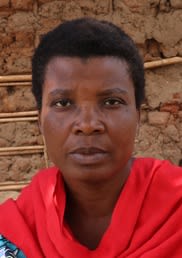Pulling the strings: Masculinities, gender and social conflict in Myanmar
This is the second report in our series on masculinities in Myanmar and aims to analyse social norms, their construction and their implications, at the household and community levels, from a comprehensive gender analysis perspective, considering the different impacts of conflict on women, men and those with diverse sexual orientations and gender identities (SOGI) in Myanmar society.
The Union of Myanmar is a complex country context marked by ethnic, religious and linguistic diversity. It has been affected by decades of an authoritarian, isolationist regime and numerous interconnected conflicts, ranging from national-level ethnic political and armed conflicts and a pro-democracy struggle, to broader social-level land conflicts. It has also seen conflicts at the household level, such as domestic violence. In Myanmar, as in other countries, these numerous forms of violence affect men, women, boys, girls and those with diverse gender identities in different ways.
There is increasing awareness that gender is important in understanding conflict and working towards peace and social cohesion. A growing number of development programmes are dedicated to addressing this. In practice, such programmes have largely focused on women’s participation in political and peacebuilding processes. This focus on increasing women’s meaningful participation in arenas and activities formerly dominated by men is an important aspect of peacebuilding. However, there is another ‘side’ to the gender inequality dilemma, which is less well understood – one that deals with the experiences of men and boys.
Understanding masculinities is important, because these masculinity norms – these social expectations – can be mobilised to manipulate the taking of violent actions. For instance, society may invoke the expectations on men to be protectors of their community from perceived external threats, including land confiscations for development projects. Where this means confronting more powerful actors such as state agencies, frustration and pressures can turn into violent action. Conflict analyses and interventions that overlook this gender dimension are incomplete, and risk missing important entry points for peace. Such projects can also risk misunderstanding the full impacts of their interventions.
Related publications
This is the second report in our series on masculinities in Myanmar. The first, ‘Behind the masks‘, looks at the wider implications of masculinities for gender, peace and security in the country.
The recommendations from both reports are available in our policy brief, ‘Mandating men‘.






